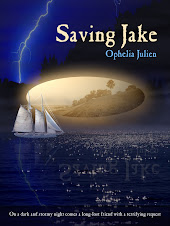Scooby-Doo first hit
the TV screens back in 1969, and that would make him fifty years old, which
seems impossible to me. But when I think about what Shaggy and the Mystery
Machine look like, I suppose 1969 sounds about right. The show was a hit,
featuring likeable teen-age mystery-solvers, a dog that could talk—more or
less, and the paranormal. Or so it seemed.
Every Scooby-Doo
episode centered on a mystery, and always featured some sort of ghost or
monster as part of the adventure. And Fred, Velma, Daphne, Shaggy, and Scooby
would always get to the bottom of the problem, revealing the ghost or monster
to be someone dressed up in a costume, or the clever result of different sorts
of special effects, all geared toward frightening away anyone who might notice
the crime that was being committed.
I don’t remember how
long it took me to figure out that the show was never going to include actual
paranormal events, but when I did, I was bummed. So disappointed. And annoyed.
Why go to the trouble of introducing ghosts or monsters if none of them was
ever going to be real? Or at least leave just a bit of uncertainty at the end
so that the viewer might consider that paranormal things might be possible?
Jumping ahead to my
adulthood, years ago, I was offered a chance to teach a short workshop on how
to write a (paranormal) novel. Not all of the students who joined me were interested
in the supernatural; some of them were just looking for information: on writing
a book; trying to find an agent; or submitting a manuscript for publication. I
understood that. The first workshop on getting published that I ever took was
about “how to get your romance novel out there.” I’m no romance writer, but the
authors who taught the class gave me some of the best information I’ve ever
learned. So I wasn’t surprised that only half the students who signed up for my
workshop wanted to work specifically on ghosts and ghouls.
However, I still
stressed the fact—and this is my own bias, I realize—that it doesn’t do to play
bait and switch with your readers. I taught that if you were offering a
supernatural story in the title and blurb of your book, that you’d jolly well
better be providing a real supernatural story. “No Scooby-Doo endings,” I would
admonish.
Believe it or not, I
have fallen prey to writers who offer a ghost story and then explain it away at
the end just like Fred or Daphne. And that always annoys the heck out of me. I
don’t like when I’m expecting one kind of story and wind up getting something
else. And this doesn’t just happen with ghost stories, either. I remember a
coworker who took her Navy-veteran father to see the movie “Pearl Harbor” and
afterward never heard the end of it when it became obvious that although the
movie was set around Pearl Harbor, it was actually a love triangle. She
probably wondered if she’d ever get her dad to join her for a movie again.
Obviously, good books
have twists and turns. Something happens that is totally unexpected, or that
surprises the reader, and that’s a good thing. I want my readers to find at
least one aspect of every book I write to be surprising or unpredictable. But I
do not want to publish a book where my ending or denouement is sooo off-kilter
with what the title implies that a reader imitates Bradley Cooper in “Silver
Linings Playbook” and hurls the book through the glass of a window after being
completely disappointed by the ending.
I don’t know how it
happened exactly, but Scooby-Doo became a mainstay in the paranormal world without
ever including anything paranormal in any of the stories. I even reference the
show every now and then in my own work. But I will say again: writers, don’t
bait and switch your readers. I’m a reader, too, and I don’t like that!





No comments:
Post a Comment